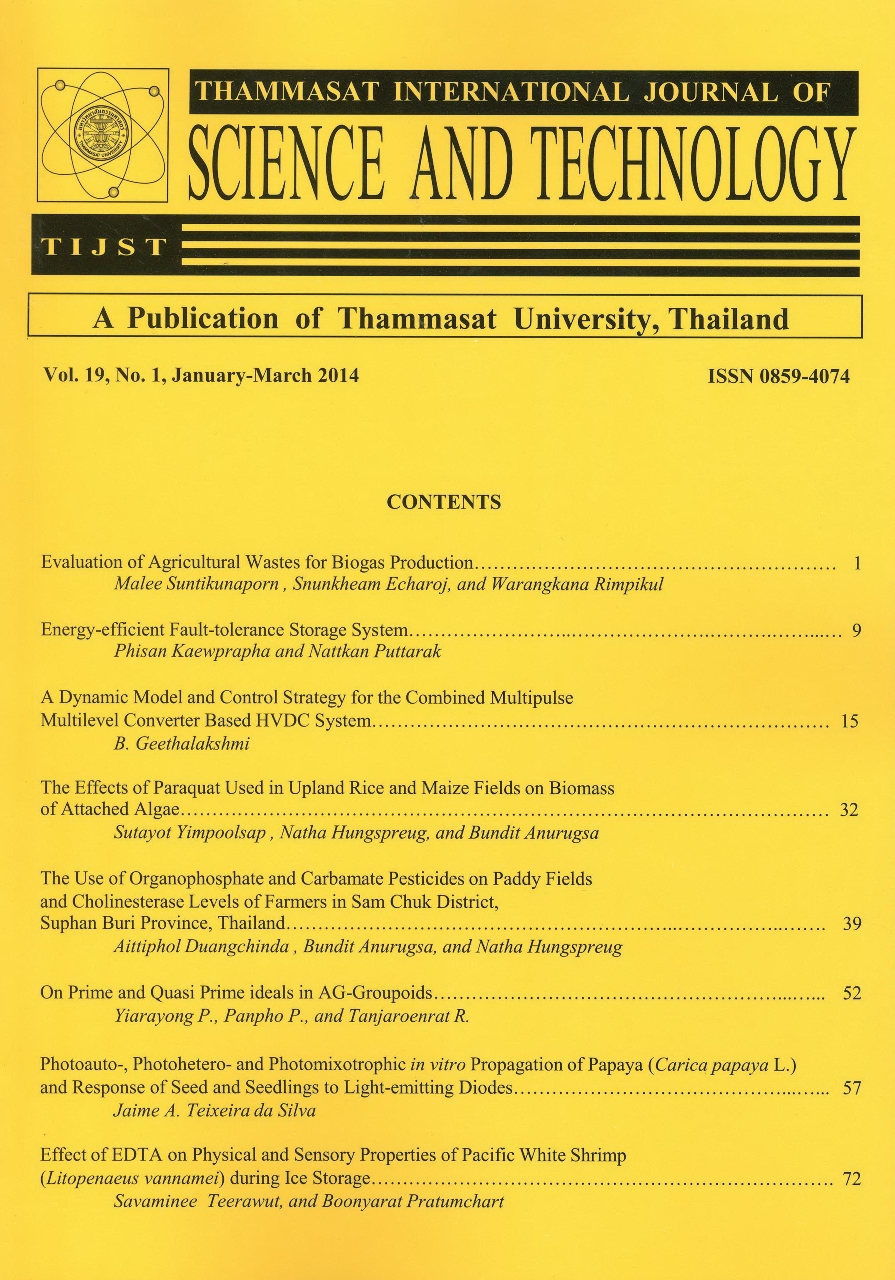The Assessment of Occupational Ergonomic Risks of Handloom Weaving in Northern Thailand
Main Article Content
บทคัดย่อ
The aim of this work was to compare occupational ergonomic risks of three types of handloom weaving in northern Thailand, namely traditional weaving, Kikratook weaving and Teen Chok weaving. One hundred and five weavers were interviewed and ergonomic aspects of each type of weaving were assessed by observation of work practices and the use of a number of established ergonomic risk assessment tools; RULA, ACGIH-HAL, SI. The prevalence of symptoms or likelihood of risk, as a function of handedness and weaving type was assessed. One way ANOVA was used to investigate between-group means.
The highest frequency of reported pain was in the back, neck and shoulder. The highest frequency of exertion was found in Kikratook weaving. The average final RULA score was found to be 6.80+ 0.41 points. The results of the highest risk HAL-NPF ratio score and SI score of the hand were found in the left hand with the Kikratook weaving and the right hand with the Teen Chok weaving. The average SI score in the Kikratook weaving had maximum score of the left hand. The ergonomic risk assessments by all three methods were likely to give similar results, except RULA which was unable to analyze the difference of individual weaving. SI is more difficult and complex than the ACGIH-HAL and RULA. The assessment of occupational ergonomic risks using three screening tools was consistent with reported symptoms. The risk of hand weaving was found to be pain caused as a result of work. Attention should therefore be given to the improvement of workstation and tool design in home weaving with special consideration of the anthropometric profile of the user group.
Keywords: Occupational Ergonomics; Risk Assessment; Handloom Weaving


